The best walkie talkies for hiking, camping, boating, and using at work
Stay in touch when out in the wild, or on photo or film set, with the best walkie talkies

The best walkie-talkies might feel like old tech. But they actually offer two things that normal smartphones (as opposed to satellite phones) can't: the ability to stay in touch with others in areas of little or no mobile coverage.
These two-way radios have evolved significantly from the bulky devices of yesteryear, and now feature enhanced range, crystal-clear audio, and impressive battery life in compact designs. So whether you're coordinating a hiking expedition, managing a construction site, or simply keeping tabs on family members during a camping trip, they're a great investment.
This guide examines the top contenders across various categories—from rugged professional-grade units to affordable family-friendly options—helping you cut through the static and identify the perfect walkie-talkie system for your needs.
Best walkie talkie for under 2km
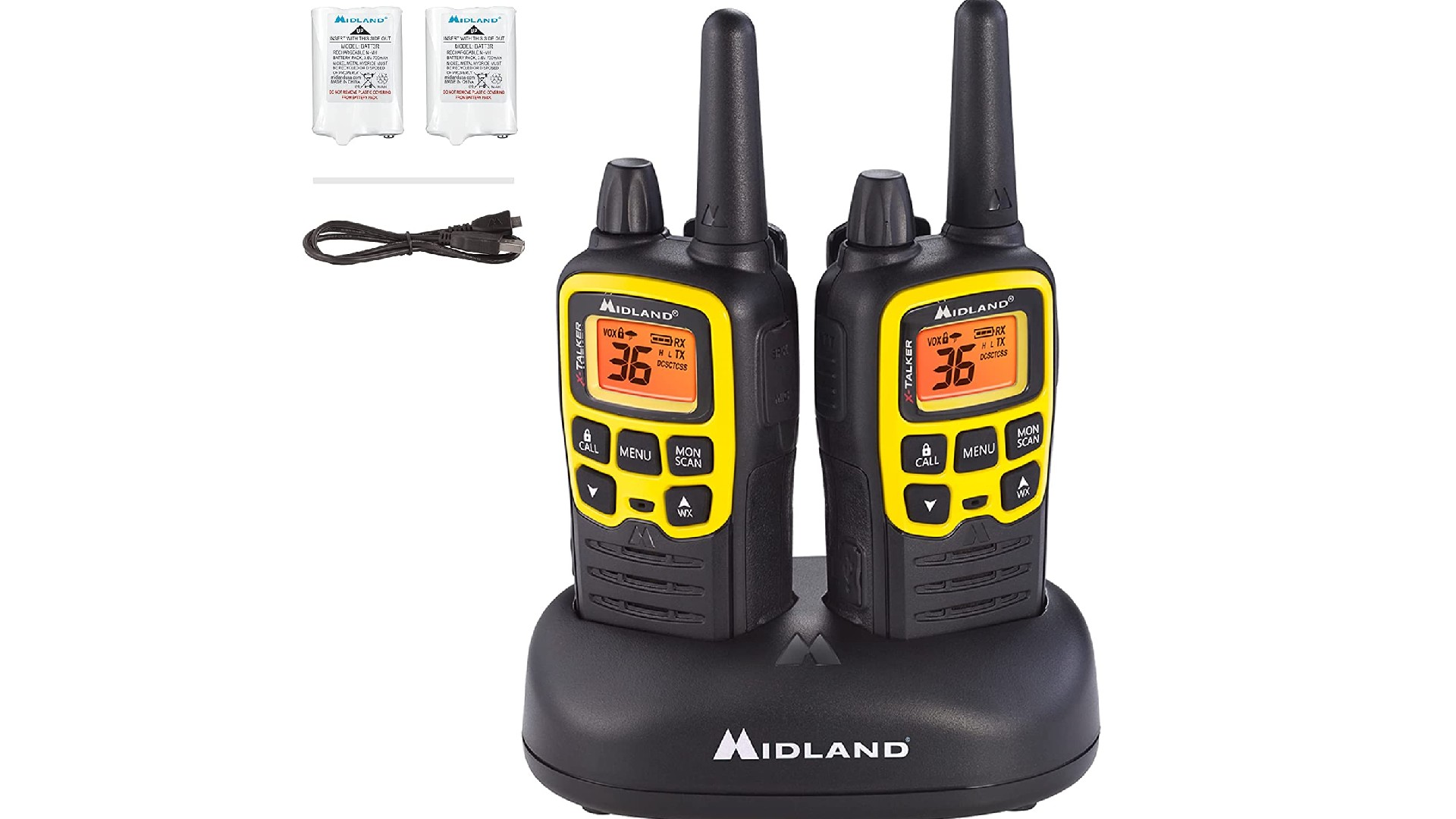
1. Midland X-Talker T61VP3
Specifications
Reasons to buy
Reasons to avoid
The Midland X-TALKER T61VP3 is a pair of black and yellow walkie-talkies offering up to 32 miles of range in open areas. These compact devices (33×33×155mm) feature 36 FRS channels and 121 privacy codes, providing 2,662 channel combinations to maintain private communications. A standout feature is the NOAA Weather Scan and Alert system, which automatically scans 10 weather band channels and warns users of severe weather conditions in their area.
The T61VP3 offers hands-free operation through Voice Activation Transmission (eVOX) with nine sensitivity levels. The package includes two belt clips, two 700mAh rechargeable battery packs, a desktop charger, and a micro USB charging cable. We particularly like the dual power options, which means the device can run on either the included rechargeable batteries or three AAA alkaline batteries (not included).
The call clarity is notably crisp compared to competitors, and the interface intuitive, with a convenient volume knob that works well with gloved hands and a backlit display that's easy to read. On the downside, battery life is below average at less than 12 hours during testing.
Overall, the X-Talker strikes a middle ground in the walkie-talkie market, offering better performance than entry-level models while being more affordable than premium options. It's a good choice, then, for outdoor enthusiasts seeking reliable communication in a compact, water-resistant package, as long as the limited battery life isn't a deal-breaker.
Best walkie talkie for under 2km
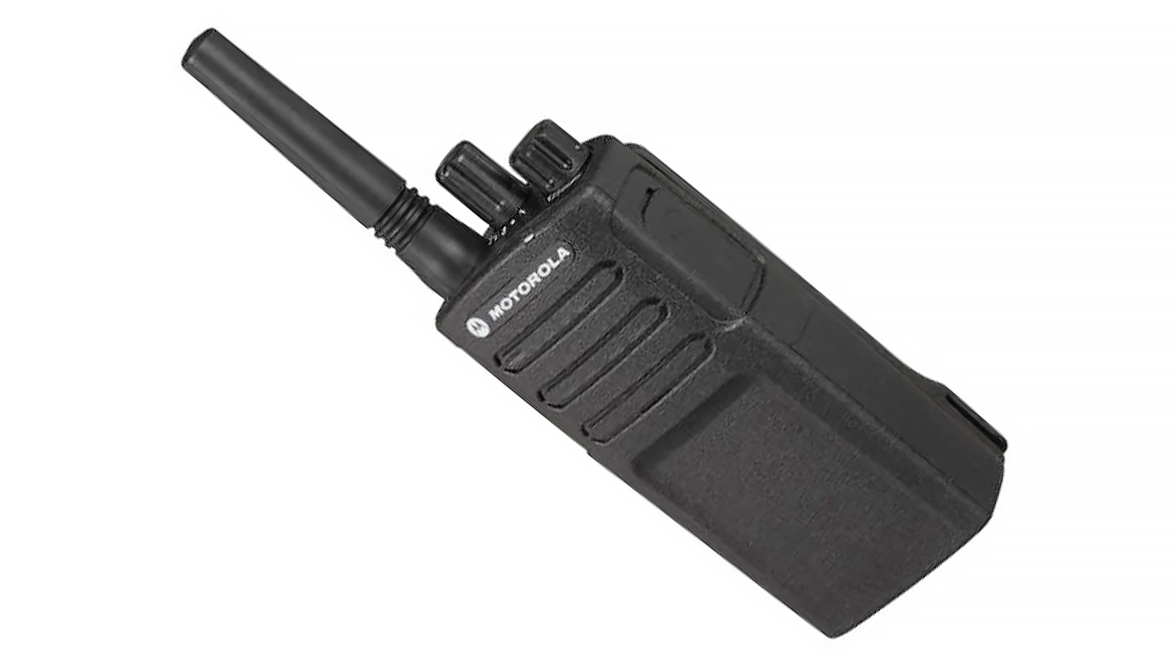
2. Motorola XT420
Specifications
Reasons to buy
Reasons to avoid
The XT420 features a rugged metal casing that meets US Military standards for durability, with IP55 certification for dust and water resistance. In testing, it survived drops from heights up to 1.5m with only cosmetic scratches. The tri-colored LED interface allows users to quickly identify radio features and status without needing a display screen.
Communication is crystal clear thanks to its powerful 1500mW speaker that cuts through noisy environments without feedback. Operating on license-free PMR446 frequencies, it offers 16 channels with 122 privacy codes for secure communications. While the theoretical range extends to 9km in line-of-sight conditions, real-world testing typically yields about 2km depending on terrain and obstacles.
Battery life is impressive at up to 20 hours on a single charge (16 hours under heavy use), significantly outperforming cheaper alternatives. Advanced features include Voice Activation (VOX) for hands-free operation and one-touch workgroup switching. The radio is also compatible with 2-pin Motorola headsets for convenient hands-free communication.
For anyone seeking durable, license-free communication without recurring fees, the XT420 delivers professional-grade performance at a reasonable price. Those needing greater range, though, might want to consider spending more on one of the models listed below.
Best walkie talkie for 2-50km
Best walkie talkie for mountain environments
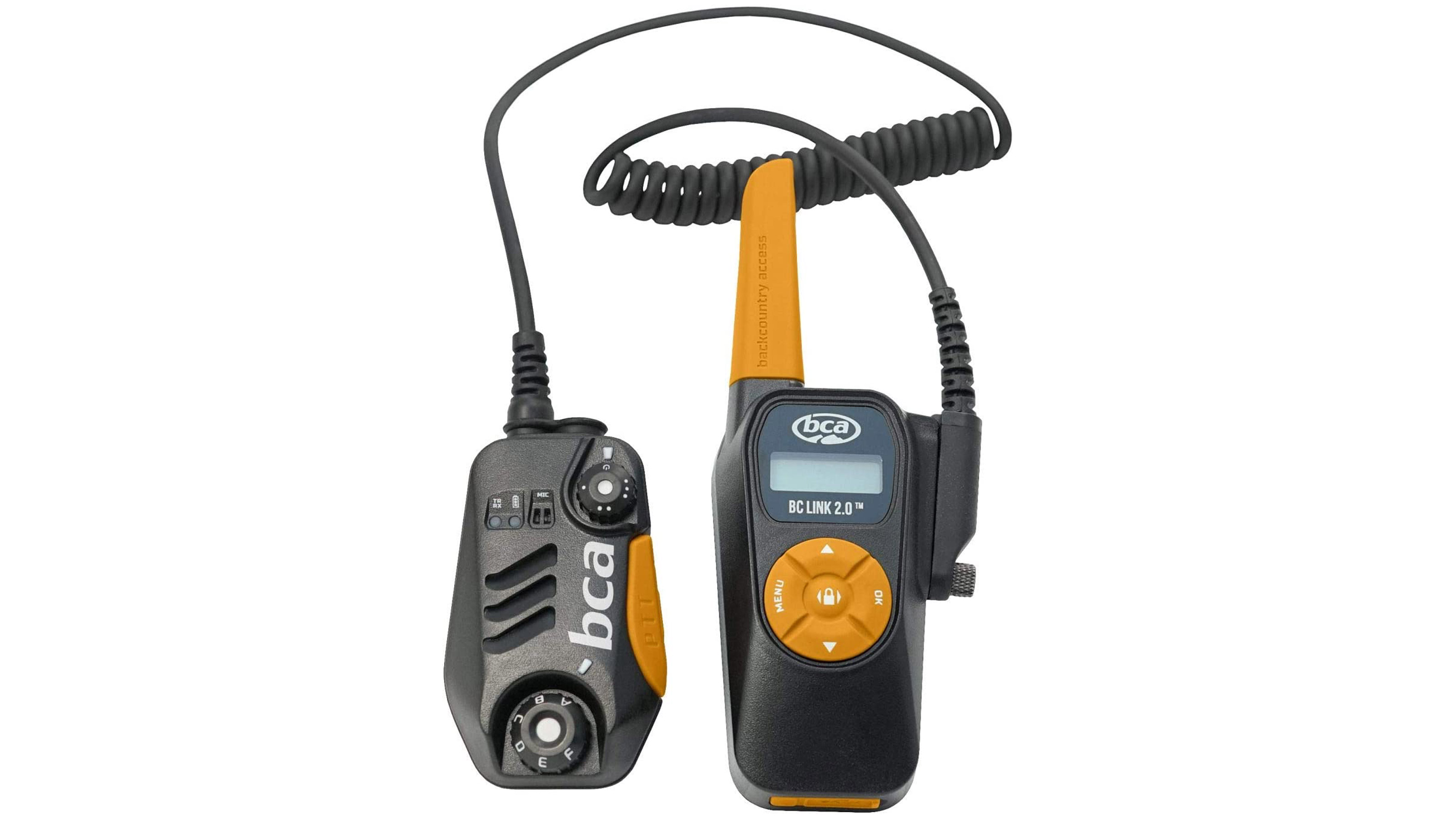
3. Backcountry Access BC Link 2.0
Specifications
Reasons to buy
Reasons to avoid
This is a serious walkie talkie for using in extreme mountain environments. That makes it a good choice for experienced skiers, snowboarders, mountaineers, photographers and film crews. Despite being pretty light at 312g, it offers a lot of power and durability. The 2,300mAh battery (well over double that of many devices on this list) provides six hours' talk time or 40 hours standby without recharging, even in cold temperatures.
It's waterproof to IP56 standards, and the separate base and microphone makes the walkie talkie easier to operate in difficult conditions, such as cross-country skiing. You can tuck the body of the device away in a pocket or pack and clip the radio to your pack’s straps, which makes chatting more appealing than reaching to the belt all the time.
The radios also offer six preset channels and privacy codes, which makes it easy to separate your group in busy areas such as national parks.
The best walkie-talkie for long boat trips
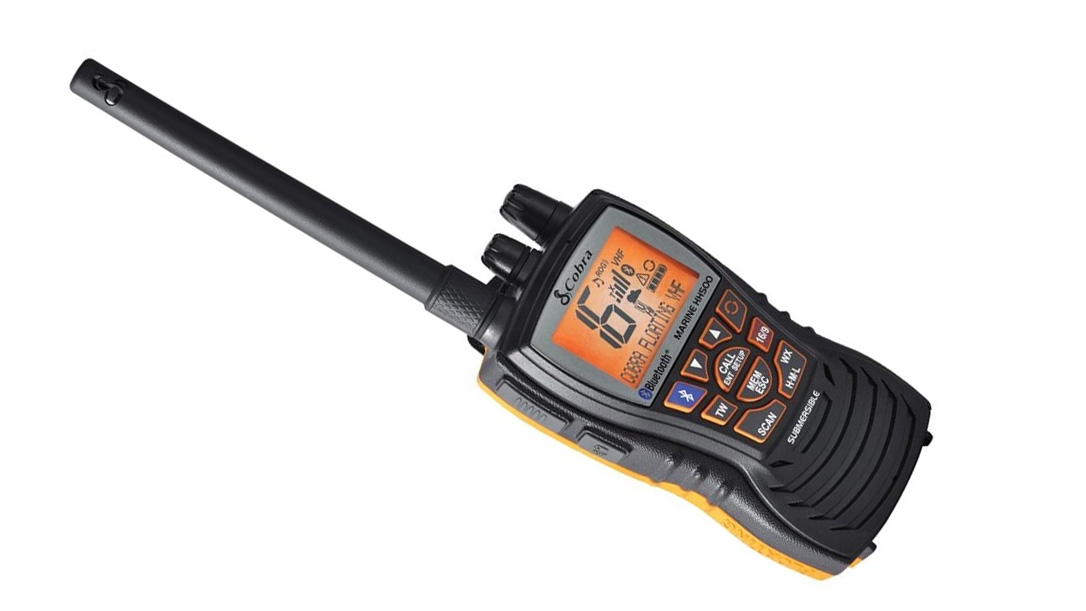
4. Cobra MR HH500
Specifications
Reasons to buy
Reasons to avoid
If you’re going out boating for more than a couple of hours, the HH500 is ideal. The rechargeable battery provides several days of charge, which should be well suited to vacation fun. If you drop it, it's submersible and will float back to the surface, so as long as you can spot the bright orange back, you can quickly recover it. Even better, its vibrate function can “burp” the water from the grille, so it works again fast.
If you’re struggling to understand transmission, the continuous looped recording means you can rewind a potentially crucial 20 seconds to listen again, plus the NOAA weather alerts should keep you out of harsh conditions. This walkie-talkie also features Bluetooth, so you can connect it to your phone (kept somewhere dry but within range) and make calls using the more element-resistant handset.
Best for sailing
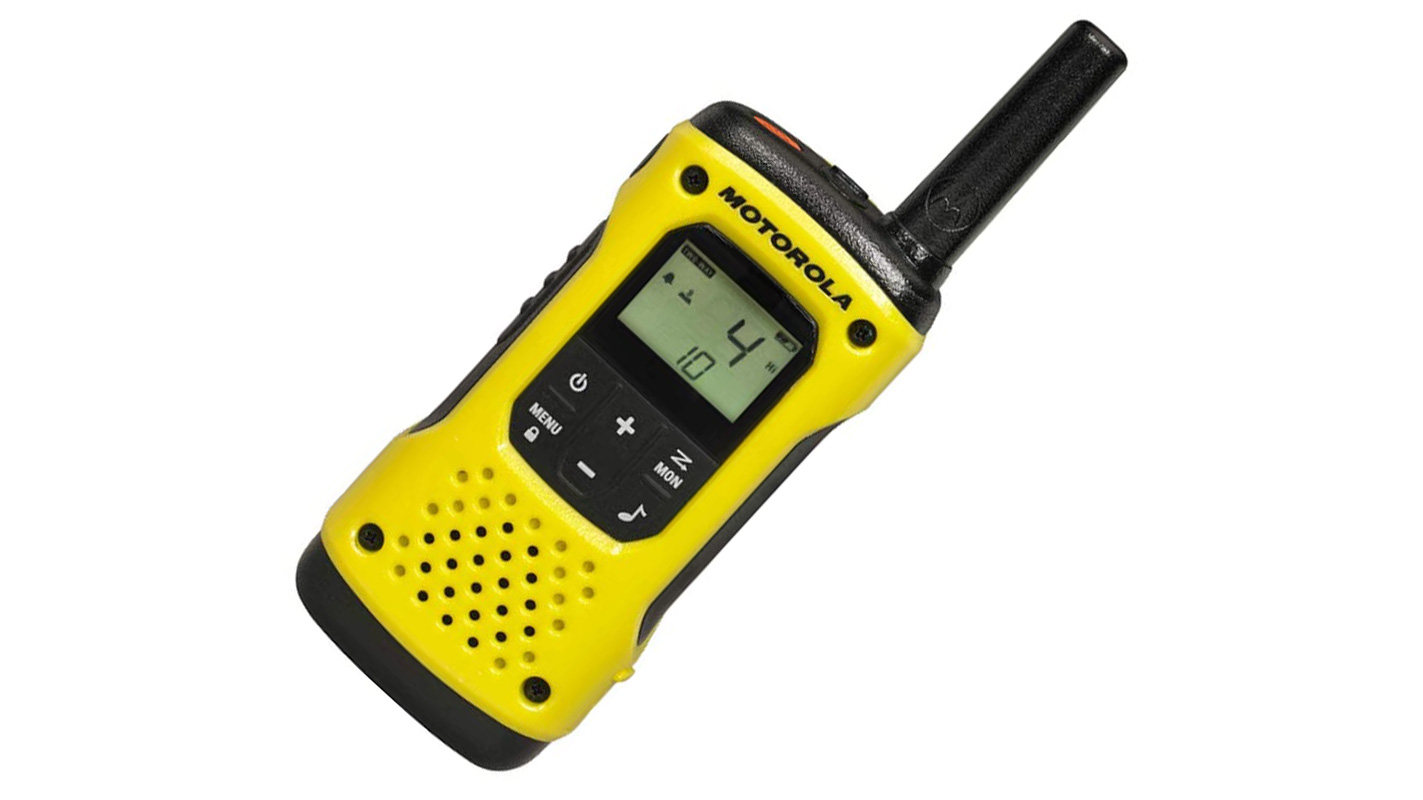
5. Motorola T92 H2O
Specifications
Reasons to buy
Reasons to avoid
If you're going out on a boat, the T92 H20 is a perfect choice. The bright casing and ability to float means you’ll be able to carry this over water without being too worried about dropping it. Not only that but it’s engineered to right itself (so the water stays out of the speaker) and activate the flashlight.
It's fine for use on land, too. The T92 H20 is compatible with other PMR446 radios (look at Motorola Talkabout T402 for a US equivalent). In the base is a torch with red and white LEDs giving you a handy choice in the dark (red is great for map checking without wiping out your night vision). You can opt for the supplied rechargeable batteries if 17 hours standby is enough, or swap for AA for that alkaline boost. And there's not just an emergency alert, but a whistle in the belt clip.
FAQs
How do I use a walkie talkie?
Typically, every user in your group will have a matching radio on the same channel. One person can occupy this at any one time by pressing the ‘talk’ button; the other radios play what they hear through their speakers. (That’s why you're supposed to say ‘over’ and release the talk button when you're done talking.) Walkie talkies in the same band should all work together whatever the brand, but you can often save money buying in packs of two or more.
What range do walkie talkies cover?
The range that walkie talkies cover depends on your line of sight. In theory, if two radios are about the height of a human, then the range will be around six miles (10km); any further and the curvature of the Earth gets in the way. Valleys and mountains can disrupt that dramatically, though, as can a repeating station. (If you need a greater range, see our roundup of the best satellite phones).
Glossary of walkie talkie terms
Why you can trust Digital Camera World
FRS
Family Radio Service is an FCC defined set of channels – 22 + 8 for repeaters – shared with GMRS, however FRS does not require a license as it is limited to lower power. These channels are 462-467 MHz UHF..
GMRS
Using the same frequencies as FRS (see above) the GMRS system allows for operation at over 2 watts of power; up to 50 watts on some channels. The down-side is that you need a license which costs $70 for ten years and – unusually for a government outfit – applies to all immediate family members of the owner. GMRS is often described as offering over 30 miles of service and, realistically, can manage around 5 (which isn’t that bad – remember what we said about the planet’s shape earlier).
MURS
Stands for Multi-Use Radio Service, and is a different group of frequencies (151-155 MHz VHF) which the FCC allocate for non-licenced use in a similar manner to CB radio.
FCC
Federal Communications Commission license radio frequencies in the USA; there is a similar body in most countries as the bandwidth must be shared, though believe it or not government agencies do try and cooperate across borders – to some extent, the FRS channel group is acceptable in Canada, Mexico and – at least some channels – in South America too; handy for trips abroad.
Channels
Frequencies on the electromagnetic spectrum are divided into broad categories (visible light is one of these) and the subcategories are known as channels. For convenience, these are named with simple numbers within GMRS/FRS For example, Channel 1 is 462.5625 MHz.
Privacy codes
Despite the name, these offer no protection from eavesdropping; when you broadcast with a walkie talkie it is not encrypted. Instead you can agree on a tone (which you won’t be able to hear yourself) which will tell your handset which is the preferred signal.
PMR446
The European equivalent of FRS, PMR stands for Private Mobile Radio and covers 16 channels around 446MHz. The frequencies aren’t exactly the same, which is why you’ll rarely find the same model numbers for Europe and America from big-name manufacturers like Motorola.
Squelch
This is another term for using sub-audible tones to filter out unwanted chatter from other users on the same frequency – see Privacy Codes.
Triangulation
This is a method of determining the location of a walkie talkie, which isn’t easy, making them relatively private in this regard. Triangulation can only be done when the talkie is turned on because it is broadcasting radio waves. This is unlike, say, a mobile phone which is always broadcasting a pulse so that the network knows where to find you, plus probably sends a GPS location via an app which, again, a walkie talkie doesn’t do.
VHF v UHF
Frequency spectra are somewhat arbitrary groups selected to some extent for the benefit of regulators, but VHF is 136-174 MHz and immediately above it is UHF at 400 to 512 MHz. This makes them better able to penetrate structure, so people sometimes think of UHF as ‘more powerful.’
Best head torch
Best night vision goggles
Best binoculars
Best monoculars
Get the Digital Camera World Newsletter
The best camera deals, reviews, product advice, and unmissable photography news, direct to your inbox!

For nearly two decades Sebastian's work has been published internationally. Originally specializing in Equestrianism, his visuals have been used by the leading names in the equestrian industry such as The Fédération Equestre Internationale (FEI), The Jockey Club, Horse & Hound, and many more for various advertising campaigns, books, and pre/post-event highlights.
He is a Fellow of the Royal Society of Arts, holds a Foundation Degree in Equitation Science, and holds a Master of Arts in Publishing. He is a member of Nikon NPS and has been a Nikon user since his film days using a Nikon F5. He saw the digital transition with Nikon's D series cameras and is still, to this day, the youngest member to be elected into BEWA, the British Equestrian Writers' Association.
He is familiar with and shows great interest in 35mm, medium, and large-format photography, using products by Leica, Phase One, Hasselblad, Alpa, and Sinar. Sebastian has also used many cinema cameras from Sony, RED, ARRI, and everything in between. He now spends his spare time using his trusted Leica M-E or Leica M2, shooting Street/Documentary photography as he sees it, usually in Black and White.
